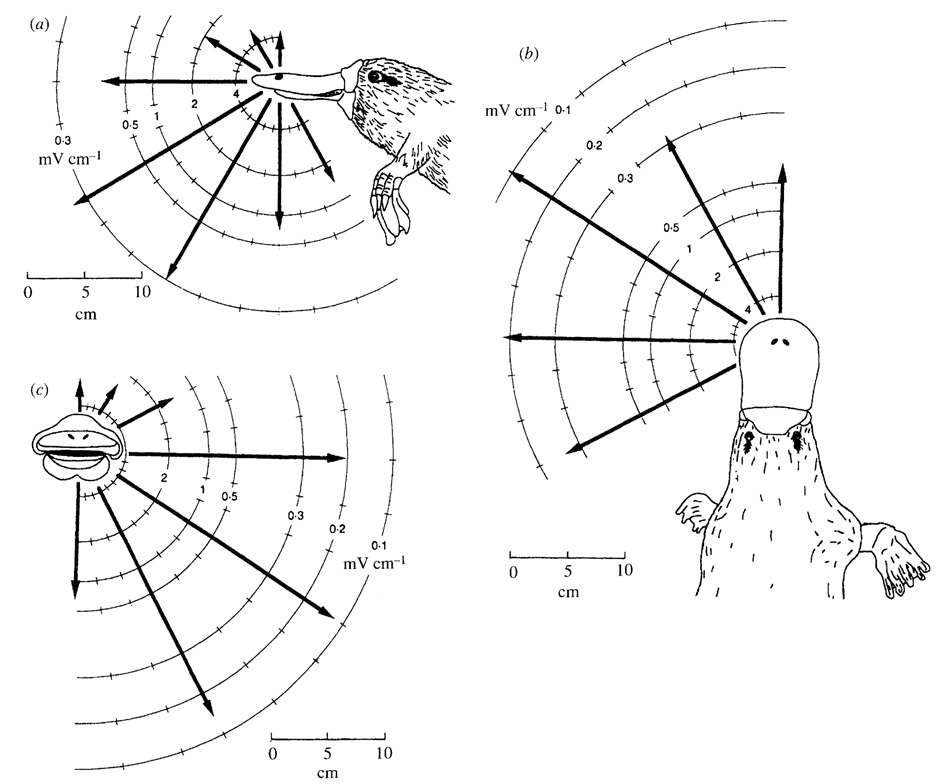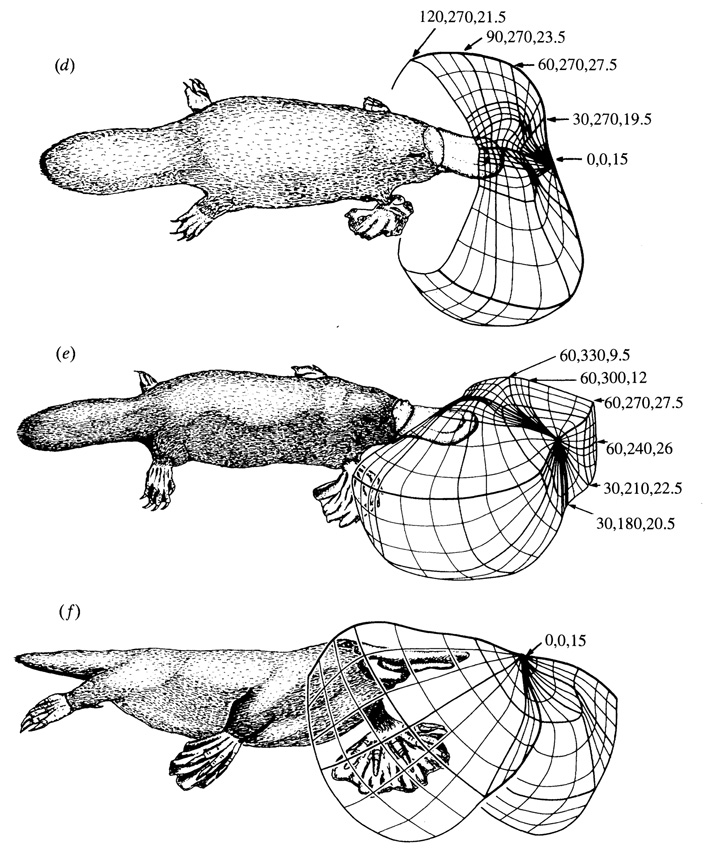Platypus Electroreception
Biology 342: Animal Behavior
Fall 2007
Author: Meera Patel
| Home | Phylogeny | Ontogeny | Mechanism | References |
Mechanism
Electroreception is a highly sophisticated system.
Platypuses recognize electric potentials in a highly directional manner as opposed to electric fish that can only migrate linearly to the electric source. This ability is attributed to the large number and variety of receptors found on the bill. Information gathered by the push-rod mechanoreceptor and mucous gland electroreceptor is processed integratively. The mechanoreceptor allows for physical detection of objects in the water whereas the electroreceptor receives electric stimuli. The information provided by both receptors inform the platypus of the location of the prey (Figure 1).

Figure 1. Click to enlarge. Mechanism
of stimuli processing
from the bill to the trigeminal nerve.
(Source: Pettigrew 1999)
The stripes found on the bill deliver messages through approximately 40,000 electroreceptors and 60,000 mechanoreceptors, creating bimodal input that can predict prey time-of-arrival by interpreting the time difference between the electric and mechanical waves (Pettigrew 1999). The stripes on the bill point to the direction that pray is located. Due to the large surface area of the bill, the receptors allow the platypus to create a local map with field lines that determine the location of prey. In fact, platypuses can respond to electric fields as low as 20mV per cm in a highly directional manner. (Figure 2; Manger & Pettigrew 1995).


Figure 2. (left) Click
to enlarge. Range of electroreception sensitivity as observed by experiments
performed by Manger &
Pettigrew 1995. The length of the arrow is the distance
at which a control object set at 2 Hz could stimulate a behavioral
response.
The circles represent the electric field strengths experienced if the
object were located at that distance. (right)
Click to enlarge. Multiple
views of the range of directionality allowed by bill sensitivity using
iso-threshold lines. (Source:
Manger & Pettigrew 1995)